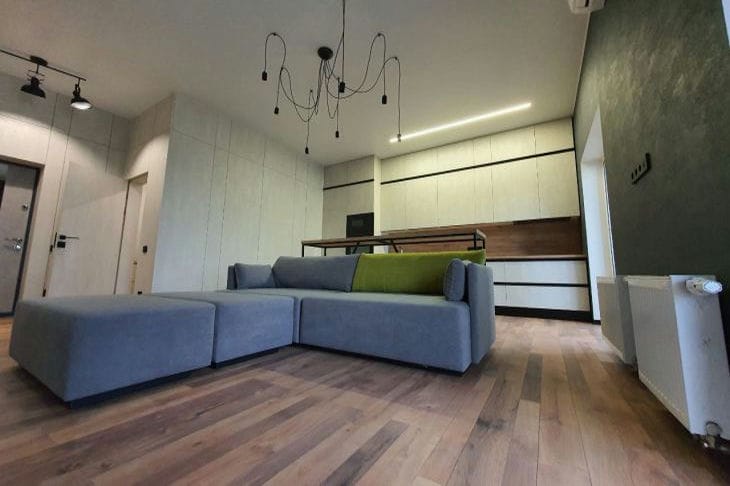Optical illusions can change our perception of the surrounding space.
It is a powerful and effective tool that can be used in interior design to create visual effects, attract attention and improve the overall aesthetics of a space.
The first type of optical illusion we'll look at is perspective, says Yulia Tychino .

Proper use of perspective can make a room appear much larger and deeper than it actually is. One way to achieve this effect is by using linear perspective.
The placement of lines in a room, such as the floor, ceiling, walls or furniture, can create the illusion of depth and space.
For example, vertical lines, such as long curtains or display windows, can create the impression of higher ceilings, while horizontal lines, such as floors or striped prints, can create the impression of greater width in a room.
Another optical illusion that can be used is light and shadow. The play of light and shadow can create interesting and unpredictable effects.
For example, using light directed at certain areas of a wall or furniture can create the effect of volume and depth.
Light can create shadows that add interest to shapes and textures of objects. You can also use accent lighting to draw attention to certain interior details.
The third type of optical illusion is patterns and textures. Well-chosen patterns and textures can create the impression of movement and depth in a room. For example, a geometric pattern on the walls or floor can create the feeling of space expansion.
Textured materials such as stone, wood or wool can create a sense of tactile depth and add interest to a space. Attention to detail and the use of different textures can create complexity and variation in a design.
The fourth type of optical illusion is color. The correct use of color can create stunning visual effects.
For example, using light and bright colors can create a feeling of spaciousness and airiness, while dark and rich colors can create coziness and intimacy. Combining different colors and their shades can create the illusion of volume and depth.
The last type of optical illusion we will look at is mirrors and reflections. Mirrors are a powerful tool for creating optical illusions, as they not only reflect light and space, but also create the impression of a double of the room.
Well-placed mirrors can significantly increase the space and add depth to the interior. Reflections from glass or glossy furniture surfaces can also create interesting visual effects.
In conclusion, using optical illusions in interior design is a great way to add uniqueness and excitement to a space.
The correct use of perspective, light and shadow, patterns and textures, color, as well as mirrors and reflections can create impressive visual effects and draw attention to certain interior details.
Using these tools, you can create a unique and inimitable space that will delight and amaze your guests.









